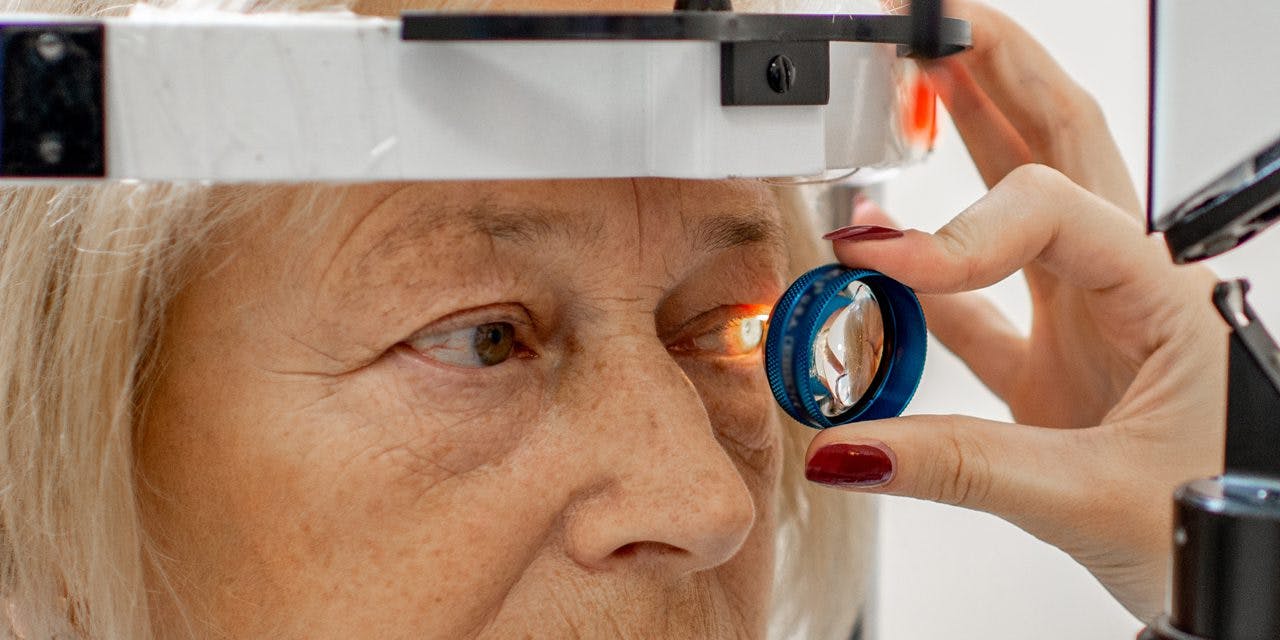Medical Card
Get Your Medical Marijuana Card Today
Meet with a healthcare provider in minutes and receive the best care for the best value.
Get your medical card online in minutes!
Get startedExplore A-Z conditions

Medical Card
Meet with a healthcare provider in minutes and receive the best care for the best value.
One of the first uses of medical cannabis was to treat glaucoma due to THC’s ability to reduce intraocular pressure (IOP).
Glaucoma is a group of eye diseases that cause abnormally high pressure in one or both eyes that damages the optic nerve, and can potentially impair vision. It’s also the leading cause of blindness in people over 60.
Symptoms of glaucoma include blurred vision or seeing rainbow-colored circles around bright lights. Age, family history, and some conditions and medications can increase the likelihood of suffering from glaucoma. Black and Latino ethnic groups are more likely to be glaucoma patients.

Treatment of glaucoma depends on the symptoms. Usually, specialized eye drops will be prescribed. Types of eye drops include:
Laser treatment and surgery are other potential treatments.
In the 1970s, there were few medications available for glaucoma that didn’t have some serious side effects. Moreover, glaucoma was — and still is — the second most common cause of blindness worldwide, after cataracts.
The condition can be challenging to treat, so researchers experimented with cannabis as an alternative and found that various cannabinoids lower intraocular eye pressure. Cannabis’ potential neuroprotective effects could help protect against retinal toxicity, though several newer glaucoma medications may provide longer-term relief.
Drugs such as Latanoprost/Xalatan, Timolol/Timoptic are arguably more effective but aren’t without their problems. Side effects include joint/muscle pain, flu-like symptoms, blurred vision, depression, and impotence. Some people cannot tolerate such medications. This makes cannabinoid treatment an option, whether as an alternative for those who cannot take other drugs or as an adjunct to existing treatment options.
THC is of particular use for glaucoma.
High doses of CBD should be avoided.
Low-to-moderate doses of THC-rich formulations
Terpenes such as beta-caryophyllene, linalool, and myrcene may be helpful.
Flavonoids may help improve visual function in patients with glaucoma.
A THC-rich formula would be ideal. Some CBD may be useful, but be careful not to overdo it as it can increase eye pressure.
“Does Marijuana Help Treat Glaucoma?”
“I was diagnosed with Glaucoma in 1975. Within a year, I already knew that there was nothing absolutely nothing that was on the market then worked for my glaucoma except for marijuana… One of the benefits of using marijuana is that most of us drop all the other drugs that really do a number on our heads and make it difficult for us to stay healthy between our livers, kidneys and everything else about us. It takes other pills to take care of everything else. I don’t have to deal with that. I did discover marijuana, and pretty soon, I found that it was the only medicine I ever needed.” Source: Elvy Musikka, Medical Marijuana Pro Con.
Thomas Orvald, MD, a cardiac surgeon, stated the following in a YouTube video he created with the Hemp & Cannabis Foundation, uploaded on Apr. 29, 2009:
“The treatment for glaucoma is to somehow get the [intraocular] pressure down within the globe [of the eye]. It just so happens that one of the many virtues of cannabis is that it has the capability of decreasing intraocular pressure… Cannabis is a very effective way, used properly, to decrease the pressure within the eye and to preserve this wonderful retina back here that transcribes all the visual sights into the brain.” Source: Thomas Orvald, MD. Medical Marijuana Pro Con.
“It has been hypothesized that THC may play a role in neuroprotection. In one study, healthy human subjects were administered a low dose of dronabinol, a synthetic form of THC, and improved optic nerve head blood flow at rest was noted. However, IOP, ocular perfusion pressure (OPP), and mean arterial pressure (MAP) showed no changes. Also, low-dose oral administration did not induce any psychoactive side effects.[25]
In another study in healthy human subjects, oral administration of a slightly higher dose of dronabinol resulted in a significant decrease in IOP and improved retinal arteriovenous passage time, indicating an increase in retinal hemodynamics, suggesting potential use in ocular disorders associated with inadequate blood perfusion. This study showed no adverse cardiovascular or respiratory side effects.[26]” Lopez, Maria J., Nataneli, Nathaniel, ‘Cannabis Use For Glaucoma And Associated Pain’
Even though many effective medications are available for glaucoma, some find the side effects intolerable. In such cases, the evidence suggests that medical cannabis could be beneficial for reducing eye pressure associated with glaucoma.
How Does Cannabis Help Glaucoma?
Note that the information in this article does not constitute medical advice.
Animal Study
Clinical Meta-analysis
Double Blind Human Trial
Human Trial
Meta-analysis
Total studies
28 studies
5 studies
1 studies
Select your state from the drop down and we’ll let you know.
The information in our comprehensive A to Z encyclopedia comes from real scientific studies.
Uncover the detailed results of these studies and find out how effective medical marijuana is for dozens of conditions.